 Some months ago, I was contacted by Geoffrey, a customer in our Dublin shop, who asked would I be interested in making Christmas pudding ice cream, made from puddings he cooked up using a recipe from his grandmother, Bridget (photo above, also supplied by Geoffrey).
Some months ago, I was contacted by Geoffrey, a customer in our Dublin shop, who asked would I be interested in making Christmas pudding ice cream, made from puddings he cooked up using a recipe from his grandmother, Bridget (photo above, also supplied by Geoffrey).
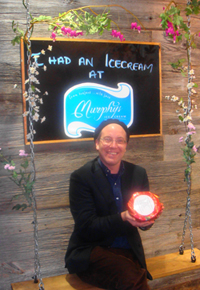 Needless to say, this was the kind of opportunity I love – it combined a good story with a customer and an Irish tradition. Geoffrey was kind enough to seek out a registered kitchen for his cooking so that we could be covered in terms of food safety, and soon I had some of the most tasty pudding in my hands.
Needless to say, this was the kind of opportunity I love – it combined a good story with a customer and an Irish tradition. Geoffrey was kind enough to seek out a registered kitchen for his cooking so that we could be covered in terms of food safety, and soon I had some of the most tasty pudding in my hands.
He’s quickly gathering a reputation for excellence with his puddings, which he makes for friends and colleagues. Maybe this is the beginning of a great artisan business!
We made the ice cream using his pudding and a hint of Baileys in the base. I think it came out quite well, and it has been a hit with customers, especially in Dublin, where I’m afraid it’s already sold out. We do have some left in Dingle and Killarney, and we’ll try to get a few more containers to Dublin in time for Christmas, but I can’t promise it.
I thought I’d post a recipe here since you might not be able to taste ours, and because if your house is anything like mine, you have left over puddings and Christmas cakes. Rather than discard them, you can use the leftovers in ice cream, which will keep long enough in the freezer that you can return to them when you’re feeling less stuffed!
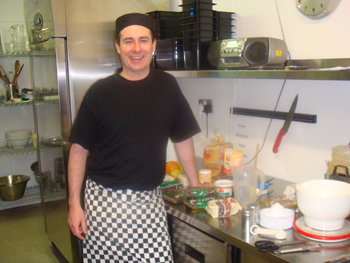
Anyway, big thanks to Geoffrey, who drove this project and made it happen. He already has plans for a gluten free version, so next year we might do both versions. I’ll have to remember to make some extra for Dublin!
Here’s the recipe, and Happy Christmas everybody!
Murphys Christmas Pudding Ice Cream
Ingredients:
• 120g sugar
• 5 egg yolks
• 220 ml cream
• 220 ml milk
• 1 tablespoon Baileys
• 200 gm Christmas pudding or other Christmas cake
What to do:
1. Combine the sugar and egg yolks and beat until thick and pale yellow.
2. Bring the milk to a low simmer.
3. Beat the milk into the egg/sugar mixture in a slow stream.
4. Pour the mixture back into the pan and place over low heat.
5. Stir continuously until the custard thickens slightly (around 65-70C) and just coats the back of a spoon. Don’t over-heat, though, because at around 76C you will scramble the eggs!
6. Immediately remove from the heat.
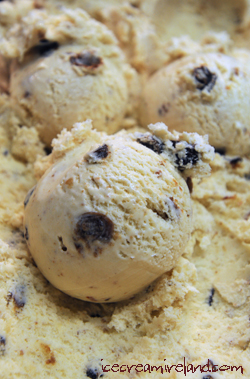 7. Allow to cool.
7. Allow to cool.
8. Stir in the Baileys
9. Whip the cream until it has doubled in volume (you should have soft peaks – don’t over-whip).
10. Fold (gently stir) in the custard.
11. Freeze using a domestic ice cream machine, adding the pudding when it’s fairly solid.
12. You can also just cover and place in the freezer, stirring every few hours, and again, add the pudding when it’s reasonably solid.
6 Servings
Notes: 1. Make sure you add the liqueur when the mixture is cool, or the alcohol will evaporate.
2. To pasteurise the eggs, heat the custard to 73C and keep at that temperature for three minutes. Use a cooking thermometer, though, and keep stirring! If the custard goes any higher than 76C, the eggs will scramble. Immediately cover and place in the freezer until cool.
Technorati tags: Baileys, Christmas, pudding, ice cream, recipe, Irish
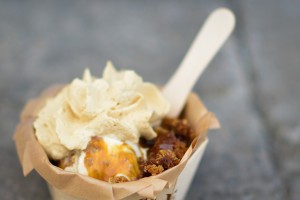

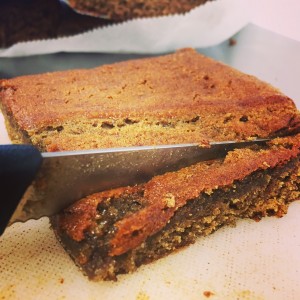











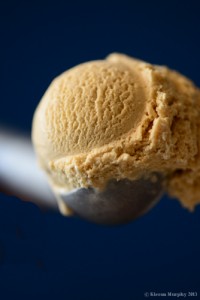
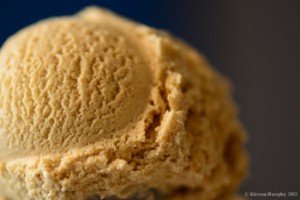
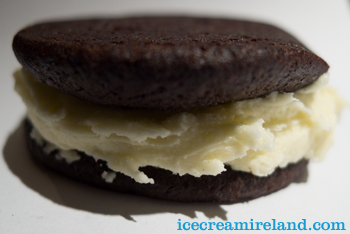
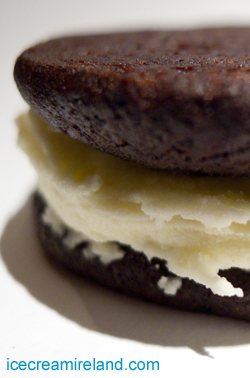



 7. Allow to cool.
7. Allow to cool.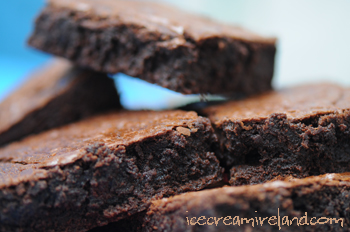

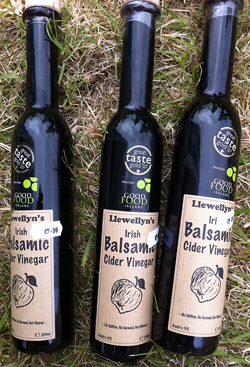
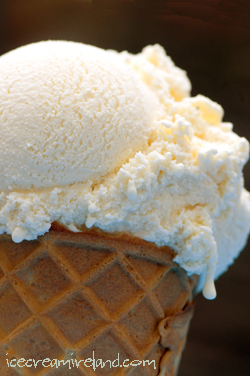

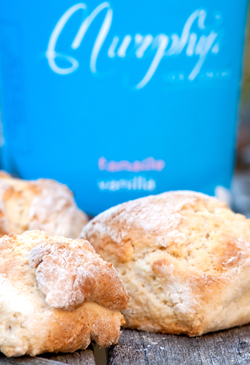
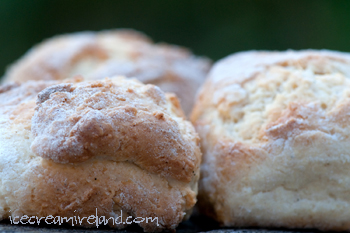
 White chocolate and lavender was the second flavour we made for Bloom, and it was hugely popular. One reason I made this flavour, is that I have lavender flowers in my garden. If you’re not so lucky, you should be able to find edible flowers in a whole foods shop.
White chocolate and lavender was the second flavour we made for Bloom, and it was hugely popular. One reason I made this flavour, is that I have lavender flowers in my garden. If you’re not so lucky, you should be able to find edible flowers in a whole foods shop.